Second law analysis of laminar flow in a channel filled with saturated porous media: a numerical solution
Abstract
:Problem statement
Numerical details
Results and discussion
Acknowledgments
References
- Nield, D.A. Comments on ‘A new model for viscous dissipation in porous media across a range of permeability values’ by A. K. Al-Hadrhrami, L. Elliott and D. B. Ingham. Transport Porous Media 2004, 55, 253–254. [Google Scholar] [CrossRef]
- Bejan, A. Convection Heat Transfer. Wiley, 1984. [Google Scholar]
- Nield, D.A.; Bejan, A. Convection in Porous Media, 2nd Ed. ed; Springer-Verlag, 1999. [Google Scholar]
- Al-Hadrami, A.K.; Elliott, L.; Ingham, D.B. A new model for viscous dissipation in porous media across a range of permeability values. Transport Porous Media 2003, 53, 117–122. [Google Scholar]
- Nield, D.A. Private communications, 2005.
- Nield, D.A. Resolution of a paradox involving viscous dissipation and nonlinear drag in a porous medium. Transport Porous Media 2000, 41, 349–357. [Google Scholar] [CrossRef]
- Nield, D.A. Modelling fluid flow in saturated porous media and at interfaces. In Transport Phenomena in Porous Media II; (D.B. Ingham and I. Pop); Elsevier Science: Oxford, 2002. [Google Scholar]
- Tasnim, S.H.; Mahmud, S.; Mamun, M.A.H. Entropy generation in a porous channel with hydromagnetic effect. Exergy, Int. J. 2002, 2, 300–308. [Google Scholar]
- Mahmud, S.; Fraser, R.A. Flow, thermal, and entropy generation characteristics inside a porous channel with viscous dissipation. Int. J. Thermal Sci. 2005, 44, 21–32. [Google Scholar]
- Mahmud, S.; Fraser, R.A. Entropy-energy analysis of porous stack: steady state conjugate problem. Int. J. Exergy 2004, 1(3), 387–398. [Google Scholar]
- Mahmud, S.; Fraser, R.A. Mixed convection-radiation interaction in a vertical porous channel: entropy generation. Energy 2003, 28, 1557–1577. [Google Scholar]
- Tannehill, J.C.; Anderson, D.A.; Pletcher, R.H. Computational Fluid Mechanics and Heat Transfer, 2nd Ed. ed; Taylor & Francis, 1997. [Google Scholar]
- Bejan, A. Entropy generation through heat and fluid flow; Wiley, 1982. [Google Scholar]
- Ibanez, G.; Cuevas, S.; Lopez de Haro, M. Heat transfer in asymmetric convective cooling and optimized entropy generation rate. Rev. Mex. Fis. 2003, 49(4), 338–343. [Google Scholar]
- Hooman, K. Fully Developed Temperature Distribution in a Porous Saturated Duct of Elliptical Cross-Section, with Viscous Dissipation Effects and Entropy Generation Analysis. Heat Transfer Research 2005, 36(3), 237–245. [Google Scholar] [CrossRef]
- Hooman, K. Second Law Analysis of Thermally Developing Forced Convection in a Porous Medium. Heat Transfer Research 2005, 36(6), 437–447. [Google Scholar] [CrossRef]
- Hooman, K. Analysis of entropy generation in porous media imbedded inside elliptical passages. Int. J. Heat Tech. 2005, 23(1). to appear. [Google Scholar]
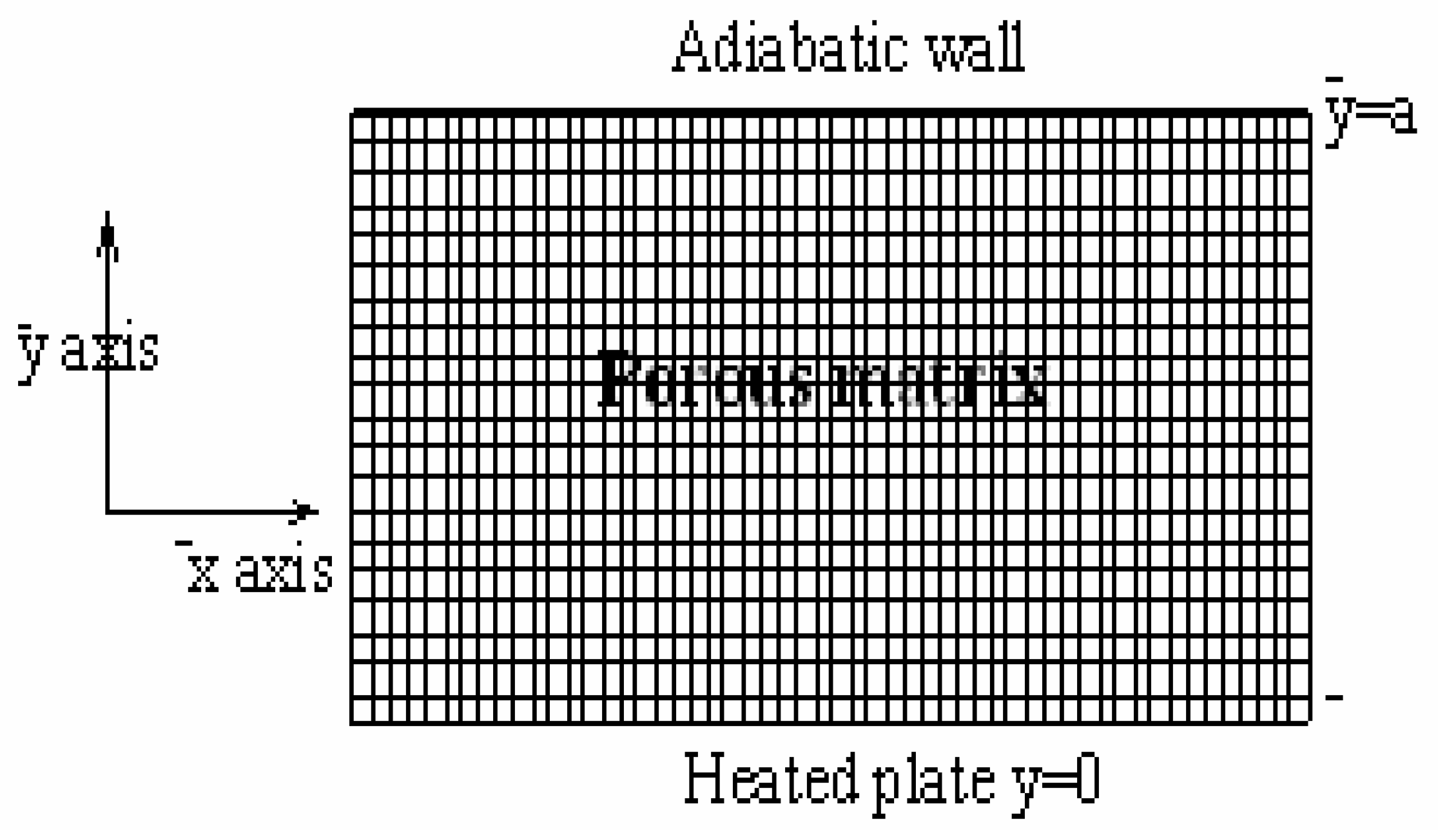

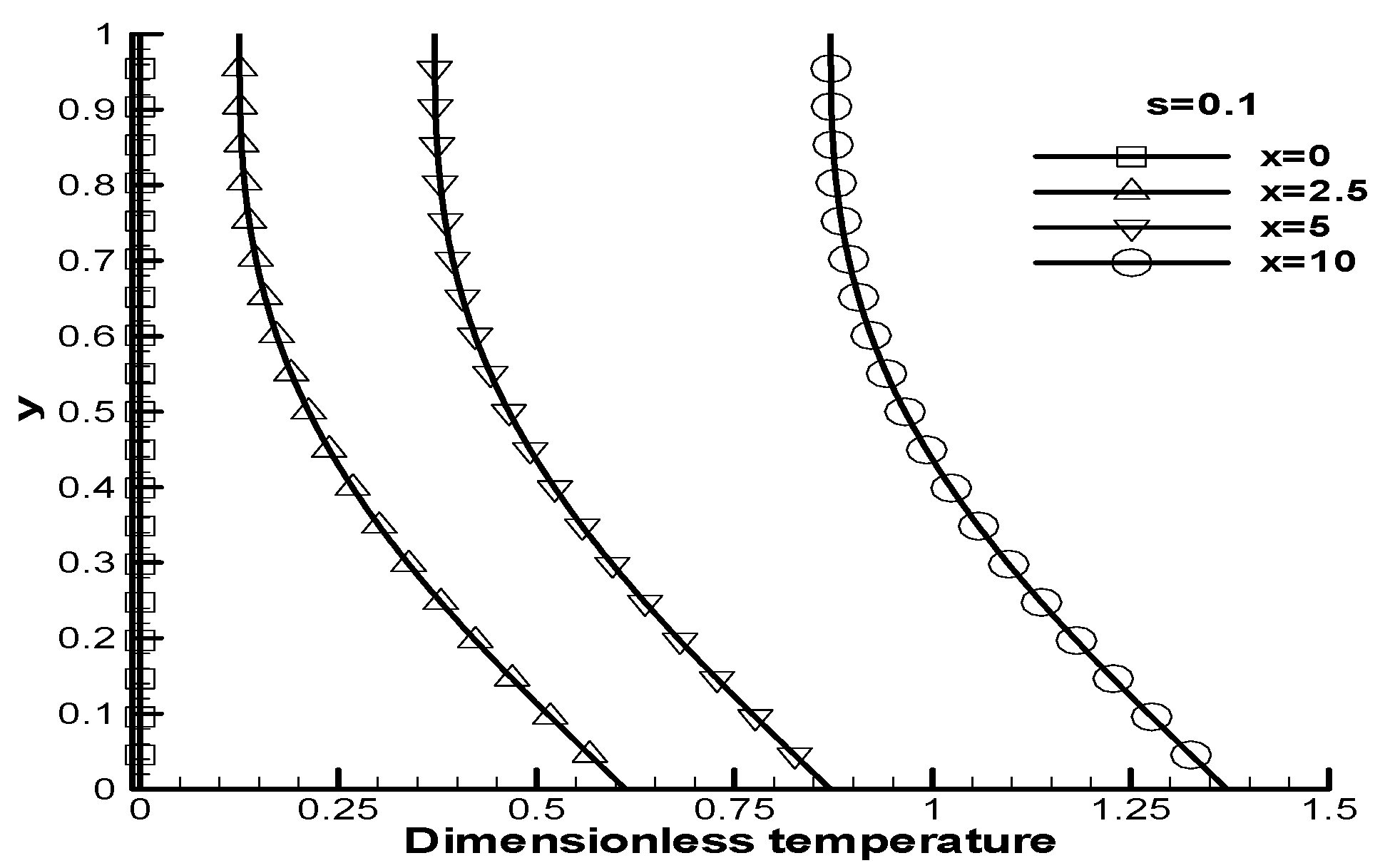

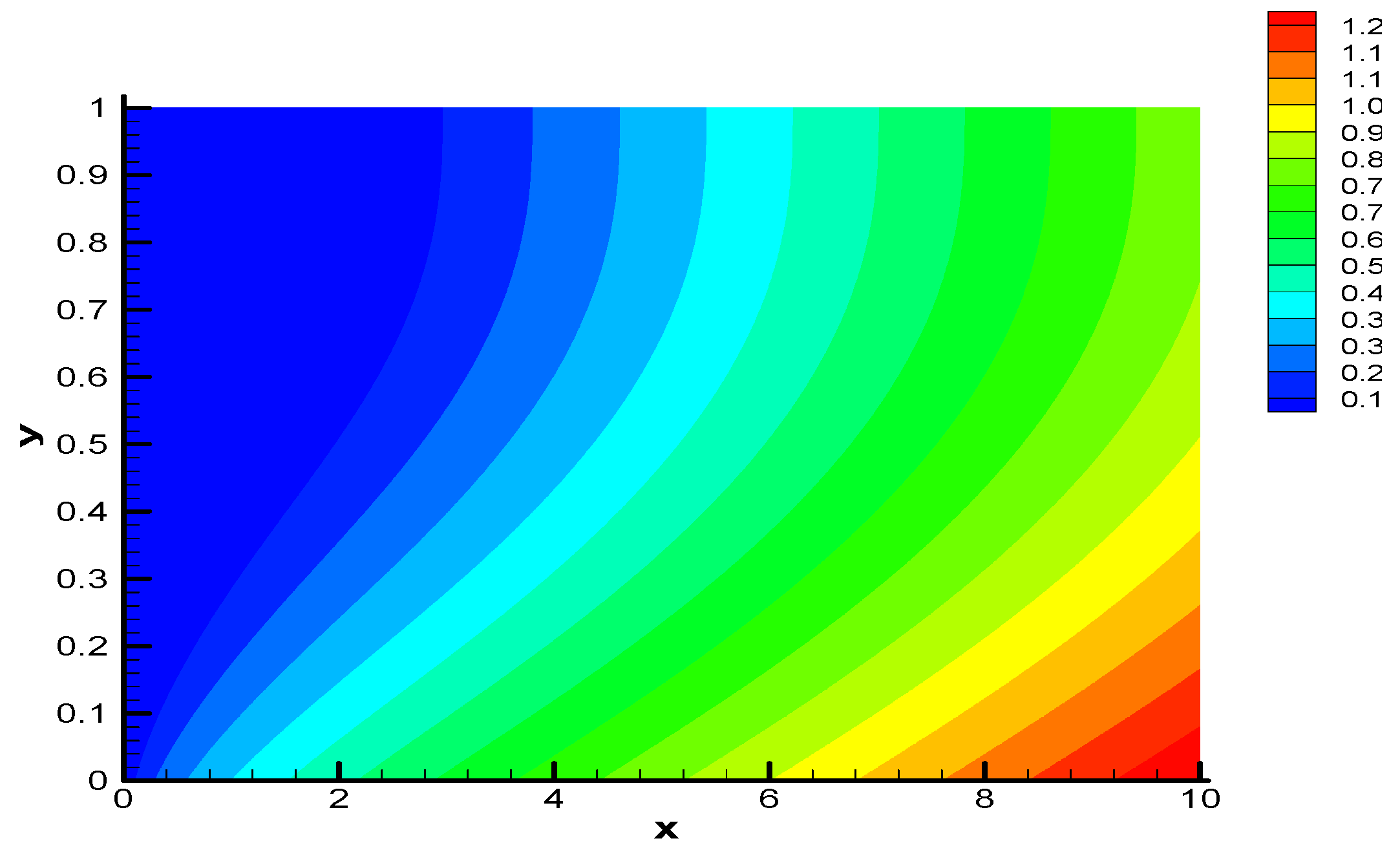
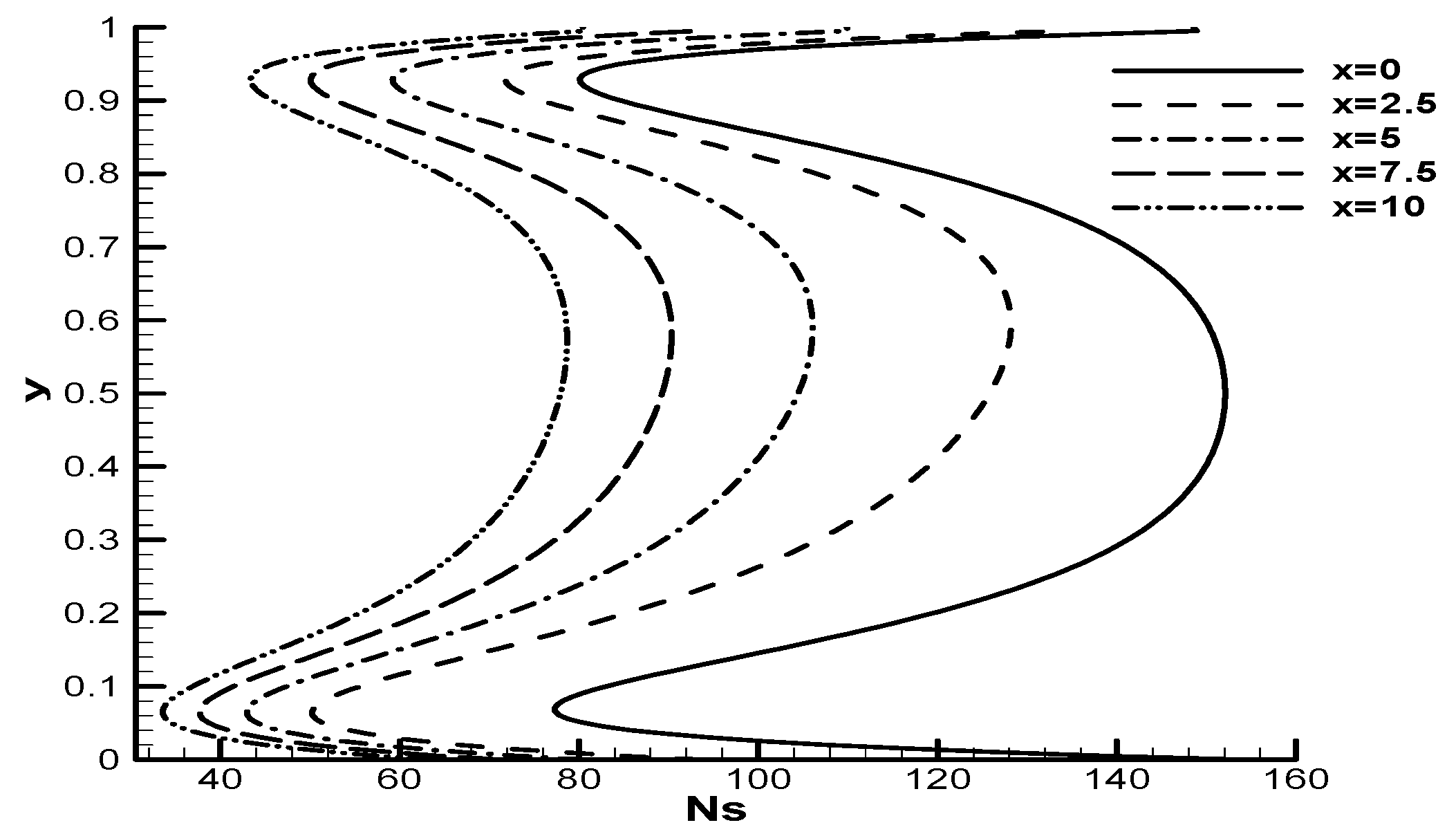
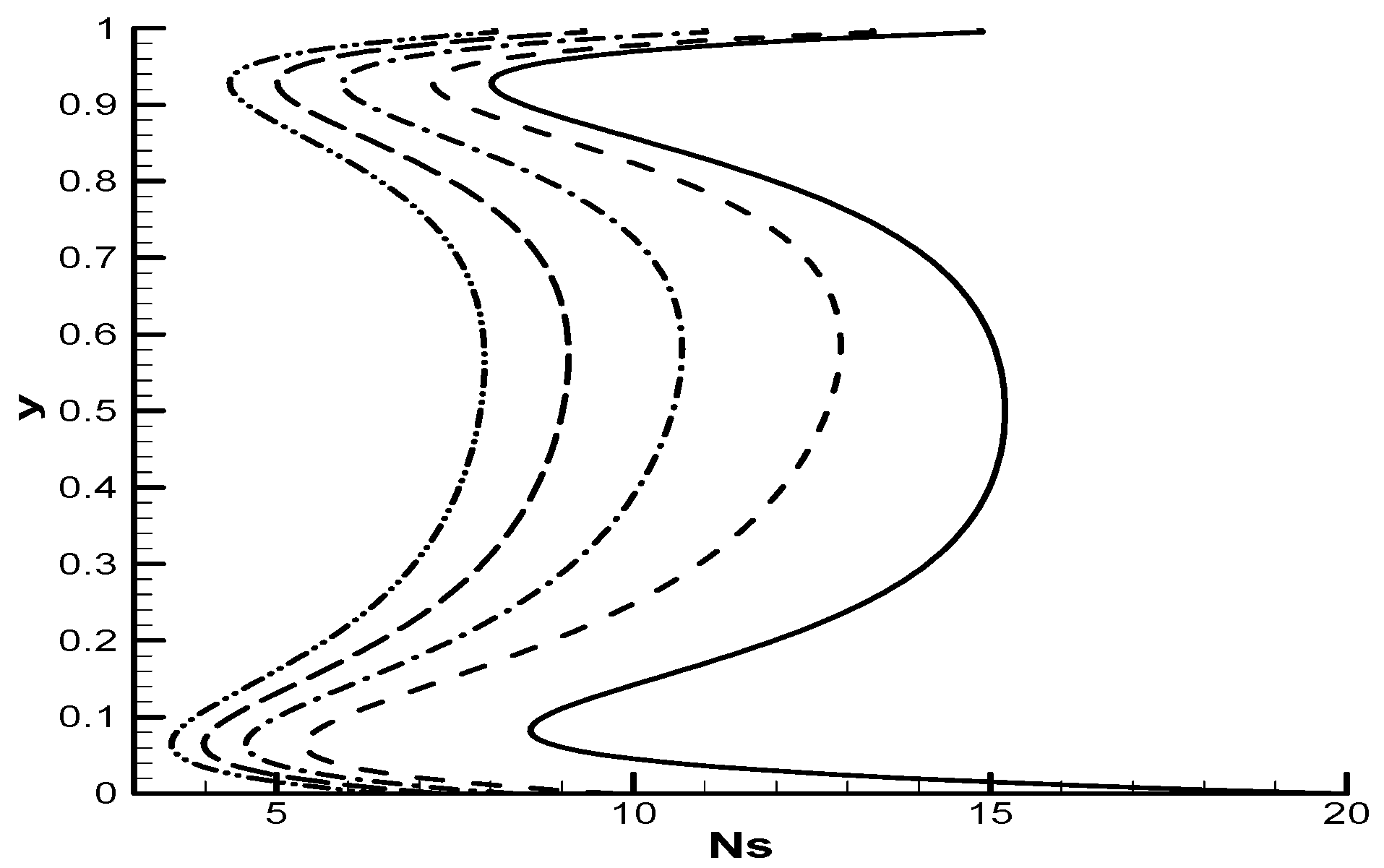
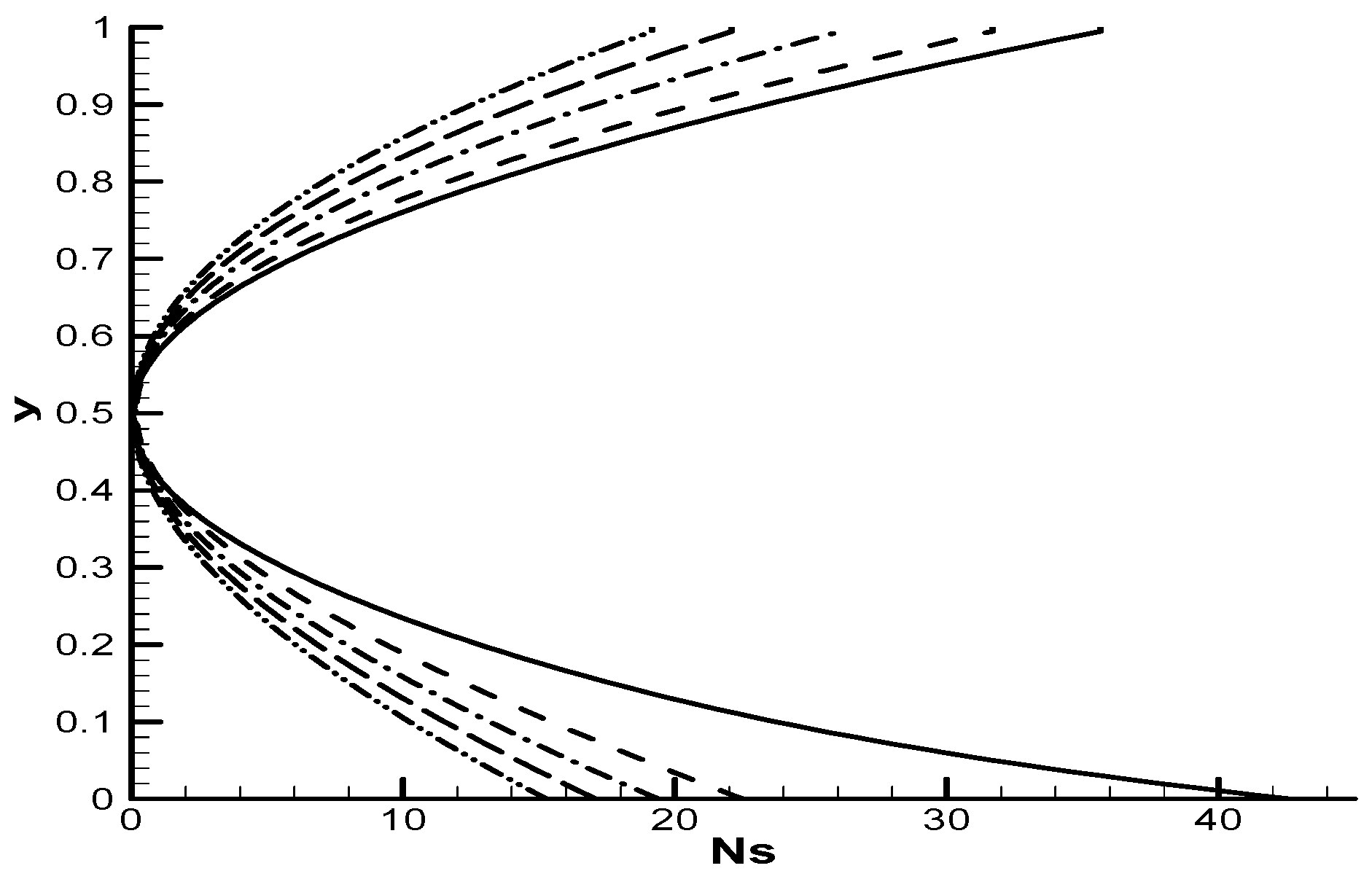
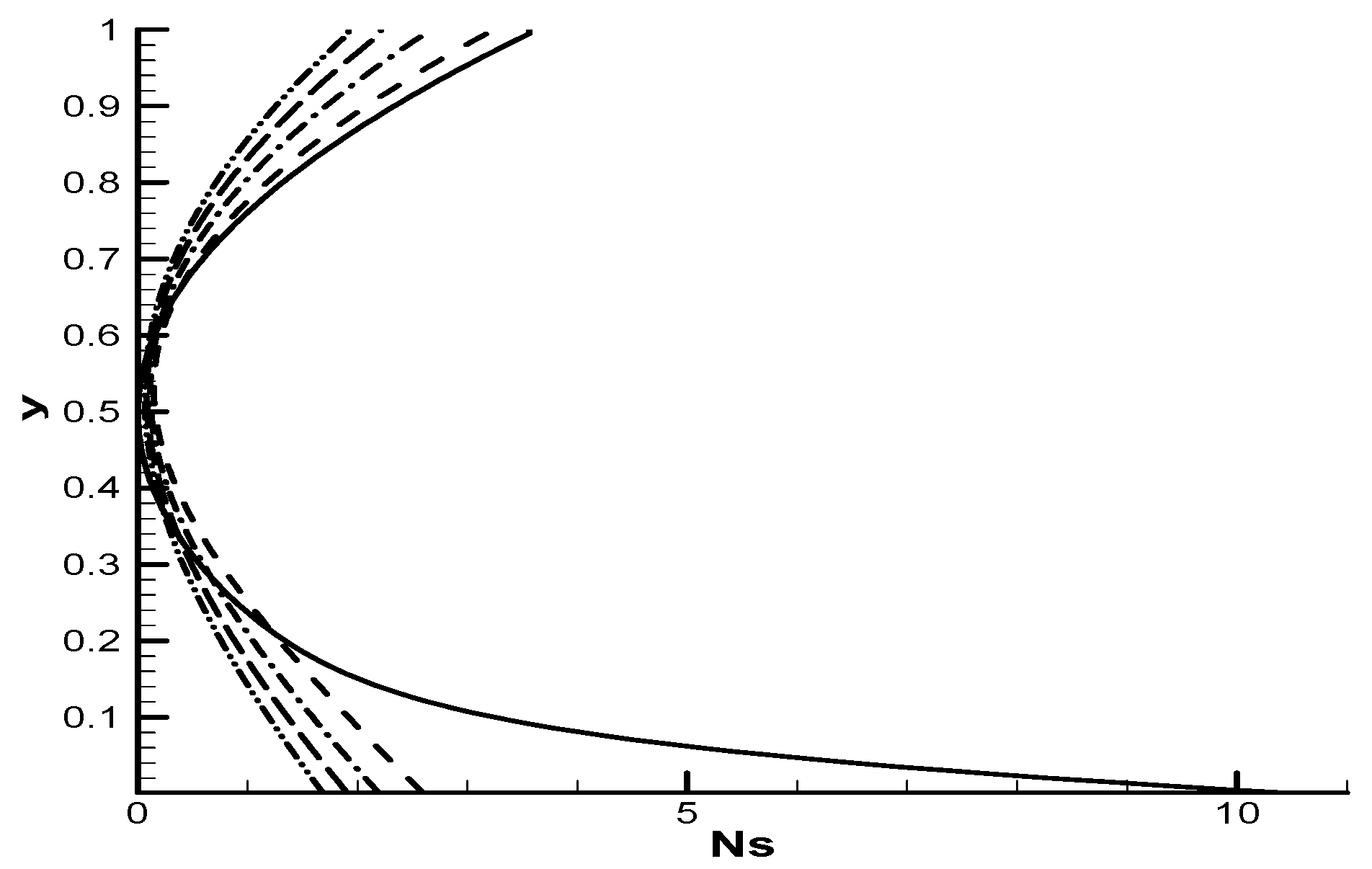
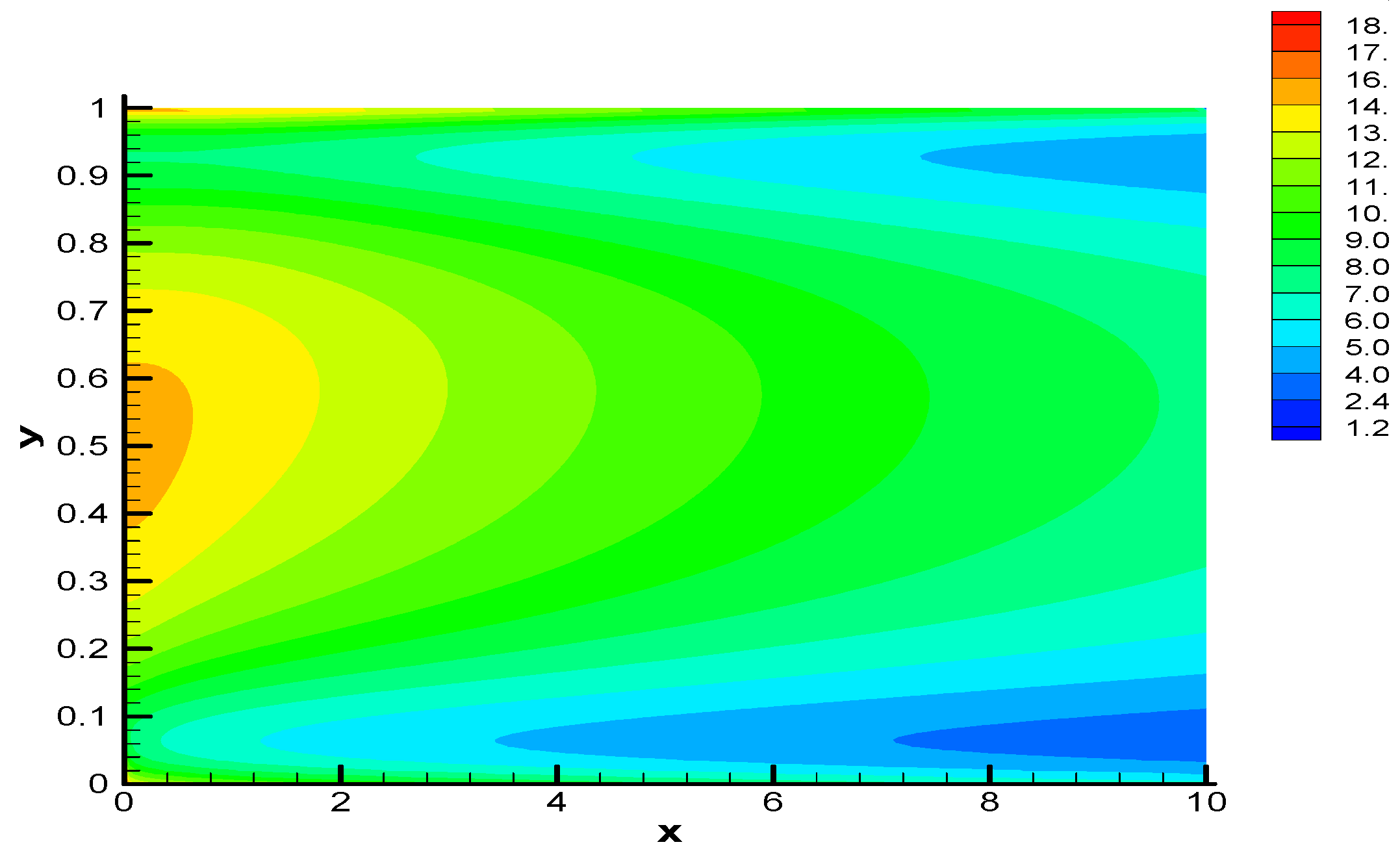
© 2005 by MDPI (http://www.mdpi.org). Reproduction for noncommercial purposes permitted.
Share and Cite
Hooman, K.; Ejlali, A. Second law analysis of laminar flow in a channel filled with saturated porous media: a numerical solution. Entropy 2005, 7, 300-307. https://doi.org/10.3390/e7040300
Hooman K, Ejlali A. Second law analysis of laminar flow in a channel filled with saturated porous media: a numerical solution. Entropy. 2005; 7(4):300-307. https://doi.org/10.3390/e7040300
Chicago/Turabian StyleHooman, Kamel, and Arash Ejlali. 2005. "Second law analysis of laminar flow in a channel filled with saturated porous media: a numerical solution" Entropy 7, no. 4: 300-307. https://doi.org/10.3390/e7040300



